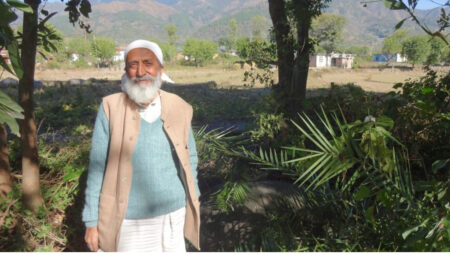Human Development – On Monday, the Ministry of Planning informed the Parliament that SC and ST HDIs have improved over time, even though they still lag behind other social groups. Over the past 30 years, such social groups have increased their literacy rates.

In Rajya Sabha, Indian National Congress (INC) MP Phulo Devi Netam asked Rao Inderjit Singh, MoS for Planning, a question. Netam questioned if SCs and STs had a lower Human Development Index than the country and for information. She also wanted to know which HDI indicators SCs and STs lag behind and why. Netam also asked the Centre why SCs and STs contributed so little to the HDI.
The Registrar General and Census Commissioner of India reported a 52 literacy rate in 1991, 64 in 2001, and 74 in 2011. Singh noted that critical health metrics like baby and child death rates had improved over the last few decades, citing NFHS statistics. In 2016, SC and ST infant mortality dropped to 35 from 86 in 1992. According to NFHS data, the child mortality rate dropped 6.9 percent from 1992’s 39.5 percent.
The ultimate point of the Human Development Index
The HDI emphasizes that people and their talents should be the ultimate measure of a country’s progress, not economic growth. The Human Development Index (HDI) summarises average performance in essential areas of human development: a long, healthy life, knowledge, and a reasonable level of living. HDI is the geometric mean of three-dimensional normalized indices.
Life expectancy at birth measures health, whereas mean years of schooling for persons 25 years and older and predicted years for children starting school measure education. GNI per capita measures the standard of living. As GNI rises, income’s relevance decreases, hence the HDI employs income’s logarithm. The geometric mean is used to combine the three HDI dimension indices’ scores.
How two countries with the same GNI per capita can have differing human development results might be used to question national policy choices. These differences can spark policy debate. The HDI simplifies and captures only a portion of the complexity of human development. It does not address disparities, poverty, human security, emancipation, etc.
The HDRO includes various composite indices as proxies for some of the most important aspects of human development, inequality, and poverty. HDI is the most accurate measure now available of human welfare and quality of life in measures other than money and material things. It depicts the relative performance of countries on certain characteristics such as longevity, health, the standard of living, and education, and so the index gives a picture of the relative achievement of countries on these parameters.
The Ministry of Planning said the government is committed to reducing the HDI gap between SCs, STs, and other social categories. Poverty and its vicious cycle, illiteracy, and dependence on wage labor are the key causes of gaps, which the government is tackling through socio-economic development programs. The Ministries of Social Justice and Empowerment and Tribal Affairs run important SC/ST programs. SC/ST school dropouts seeking primary education dropped to 2.54% from 5.12% in 2015-2016.
The Ministry of School Education and Literacy reported zero such dropouts in 2020–2021. ST and SC women progressed the fastest from 2001 to 2011, according to census data. The same data shows a 9.4 and 8.5 percent increase in ST and SC men’s literacy rates. In 2011, SC women were 56.5% literate, up from 42% in 2001.
Despite their strength and many positive traits, the deprivation faced by these social groups persists. They have more progressive gender norms than society. The sex ratio is favorable to women compared to other Indian communities. Less hierarchical and more lively community interactions. Property owners and landless employees rarely experience structural fragmentation. Their indigenous knowledge helps them endure difficult natural conditions, which can benefit humans worldwide.
Also read: Tribal women now have equal succession rights












